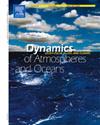Seasonal and topographical dynamics of precipitable water vapor in Nepal: A GNSS-based assessment
IF 1.9
4区 地球科学
Q2 GEOCHEMISTRY & GEOPHYSICS
引用次数: 0
Abstract
Precipitable water vapor (PWV), a key indicator of atmospheric moisture, plays a vital role in weather forecasting, climate studies, and understanding atmospheric thermodynamics. This study utilizes ground-based GNSS technology to estimate PWV and Zenith Tropospheric Delay (ZTD) across three distinct topographical regions of Nepal: Terai, Hilly, and Himalayan, over four seasons: winter, spring, summer, and autumn. The analysis reveals that the Terai region, characterized by lower elevations, consistently exhibits higher PWV and ZTD values compared to the high-altitude Himalayan region, with the Hilly region showing intermediate levels. Seasonal variations indicate the highest PWV and ZTD during the summer and the lowest during winter, reflecting the influence of monsoonal moisture. Diurnal variability analysis further shows significant fluctuations in PWV, with a minimum in the early morning (21:45–00:45 UTC) and at night (17:15–18:15 UTC) and a maximum during the warmest part of the day (6:15–9:15 UTC). These findings underscore the effectiveness of GNSS technology in monitoring atmospheric water vapor and highlight the significant impact of topography and seasonal cycles on PWV distribution in Nepal. Such research and insights are crucial for improving weather forecasting, advancing climate change research, and enhancing atmospheric monitoring in regions with diverse topographical features.
尼泊尔可降水量的季节和地形动态:基于gnss的评估
可降水量(PWV)是表征大气湿度的重要指标,在天气预报、气候研究和大气热力学研究中起着至关重要的作用。本研究利用地面GNSS技术估算尼泊尔三个不同地形区域(Terai,丘陵和喜马拉雅)的PWV和天顶对流层延迟(ZTD),四季:冬、春、夏、秋。结果表明,与高海拔喜马拉雅地区相比,海拔较低的Terai地区始终具有较高的PWV和ZTD值,而丘陵地区则处于中等水平。夏季PWV和ZTD最高,冬季最低,反映了季风水汽的影响。日变率分析进一步显示PWV的显著波动,最小值出现在清晨(21:45-00:45 UTC)和夜间(17:15-18:15 UTC),最大值出现在一天中最温暖的部分(6:15-9:15 UTC)。这些发现强调了GNSS技术在监测大气水汽方面的有效性,并强调了地形和季节周期对尼泊尔PWV分布的重要影响。这些研究和见解对于改善天气预报、推进气候变化研究和加强不同地形特征地区的大气监测至关重要。
本文章由计算机程序翻译,如有差异,请以英文原文为准。
求助全文
约1分钟内获得全文
求助全文
来源期刊

Dynamics of Atmospheres and Oceans
地学-地球化学与地球物理
CiteScore
3.10
自引率
5.90%
发文量
43
审稿时长
>12 weeks
期刊介绍:
Dynamics of Atmospheres and Oceans is an international journal for research related to the dynamical and physical processes governing atmospheres, oceans and climate.
Authors are invited to submit articles, short contributions or scholarly reviews in the following areas:
•Dynamic meteorology
•Physical oceanography
•Geophysical fluid dynamics
•Climate variability and climate change
•Atmosphere-ocean-biosphere-cryosphere interactions
•Prediction and predictability
•Scale interactions
Papers of theoretical, computational, experimental and observational investigations are invited, particularly those that explore the fundamental nature - or bring together the interdisciplinary and multidisciplinary aspects - of dynamical and physical processes at all scales. Papers that explore air-sea interactions and the coupling between atmospheres, oceans, and other components of the climate system are particularly welcome.
 求助内容:
求助内容: 应助结果提醒方式:
应助结果提醒方式:


